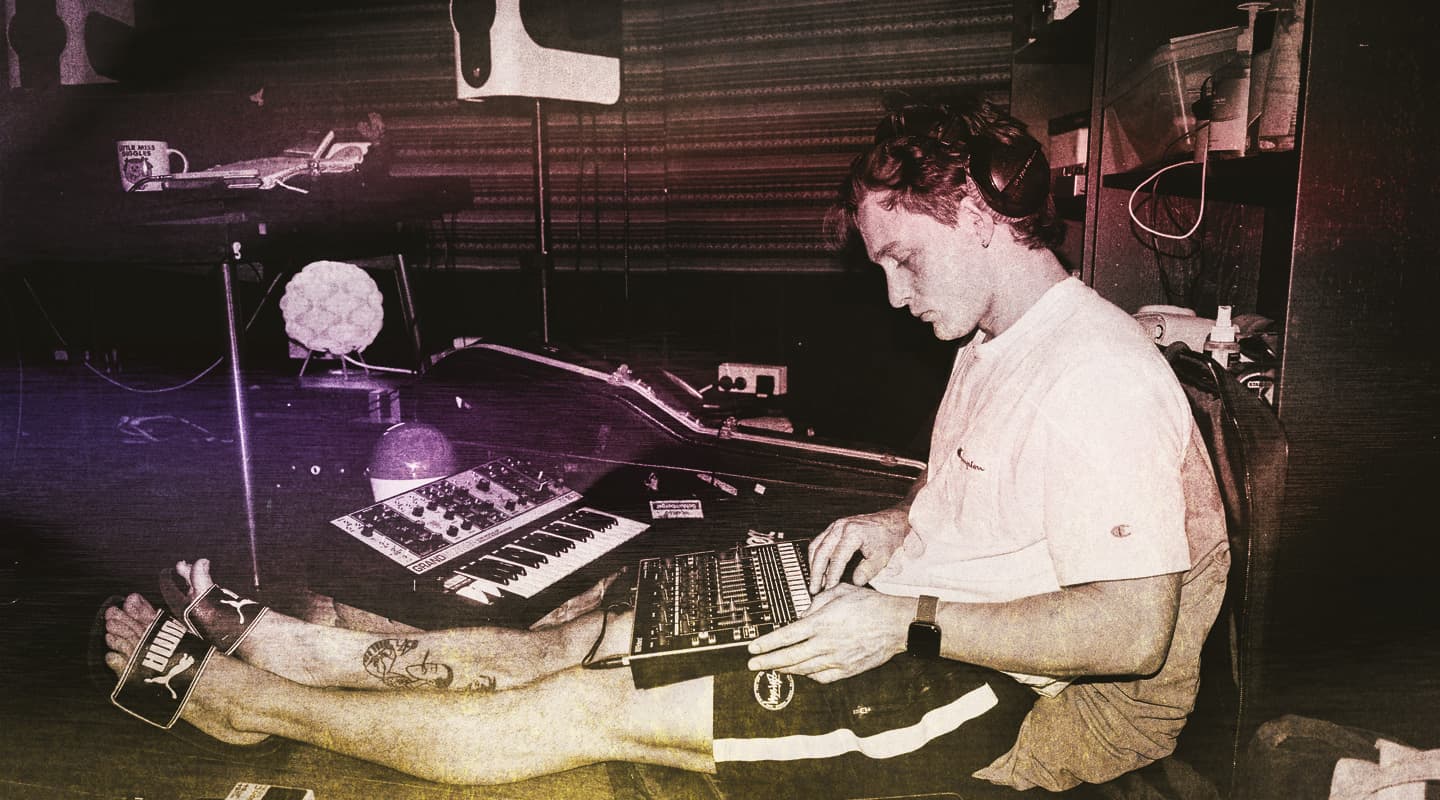
Recording Death by Denim’s Moonbow
Spaced out, messed up and never boring. Bassist George Gunson double-downs on the Death by Denim approach to record production.

Artist: Death by Denim
Album: Moonbow
Australian Indie. What is it? For Death by Denim, it’s a lot of things. They certainly subscribe to the Spacey Jane school of classic guitar tones and chill vibes, but also space-out as much as Kevin Parker. (Interestingly, all three names hail from the Republic of Western Australia.) AT sat down with bassist and synth-head George Gunson to see how the sound has matured into its current form in the new release, ‘Moonbow’.
“We’ve been discovering how Death by Denim sounds since our first release two years ago. Sonically, we were still trying to figure out where everything fits. In this album, we’ve had to learn how to get out of the way as players, having taken the synth route. An analogue pad may sound amazing, but it’s like painting with the broadest paintbrush imaginable. The frequency space it takes up is massive! So, in the new project, we’re going down the path of more usable sounds like arpeggiators that step on fewer instrumental toes.
“I’ve moved through synths as we’ve moved through projects. On the new album, it’s the Prophet 8 Rev2, but also Debaser Studio’s Moog Grandmother. The unquantised step sequencer on there is a primitive beast — programming that by ear and playing with the independent rate creates some really idiosyncratic textures. And the spring reverb is brilliant. Arpeggios and sequences ramping through that are a big part of the album’s sound.”

IN THE JEANS
For every classic AC30-style indie tone you’ll hear on ‘Moonbow’, you’re also getting a DI sound.
“For some passages, running through a Vox or maybe a Deluxe Reverb just isn’t sticking,” comment George Gunson. “That’s when our producer Andy’s response is ‘Screw it, let’s just plug it straight in.’
“The in-your-face-ness of a direct sound running through Andy’s battery of outboard compressors is essential. At the beginning of ‘Feels Like Fiction’, we’re running TC’s Hall of Fame reverb as the last effect, straight in for a very direct, spaced-out sound. And every time there’s fuzz, the DI approach allows us to tame that sound more easily. Seeing [guitarist] Palle [Mazzulla] is mental and runs through both a Fuzz Face and Big Muff in sequence, it’s needed. He’s also the only person I know using the Boss Super Shifter, a little green pedal that makes this really nice, but weird modulation. It’s very Palle. He’ll play around with anything trying to get the lo-fi guitar tone we’re looking for.’
THE MATON MASH
Andy Lawson, owner and founder of Freo’s Debaser Studio, like any self-respecting engineer, keeps his rarest and most precious gear under lock and key.
“Out from a dusty draw, inside this wooden box, Andy pulls out his 1970s Neumann. He’s just got it serviced. It sounds amazing,” according to George. And is clearly the perfect thing for frontman Nick Ilidias’ Arctic Monkeys-like vocal delivery. “Andy made the observation that he hardly had to EQ Nick’s vocals at all, which is very high praise indeed.” This provides a very clear, upfront take. But what of double tracks?
“We’ll use that track and then record through — get this — the sound-hole piezo of a Maton AP5 pickup. It’s really gnarly. We’ll have the guitar up and have Nick sing straight into the hole, and then run it through a whole bunch of pedals. An Earthquaker Avalanche Run, a saturator and all kinds of stuff to get weird textures. All this you could do with plug-ins, granted, but it lacks the shitty-ness of a guitar mic running through pedals.”
We’ll have the guitar up and have Nick sing straight into the hole, and then run it through a whole bunch of pedals
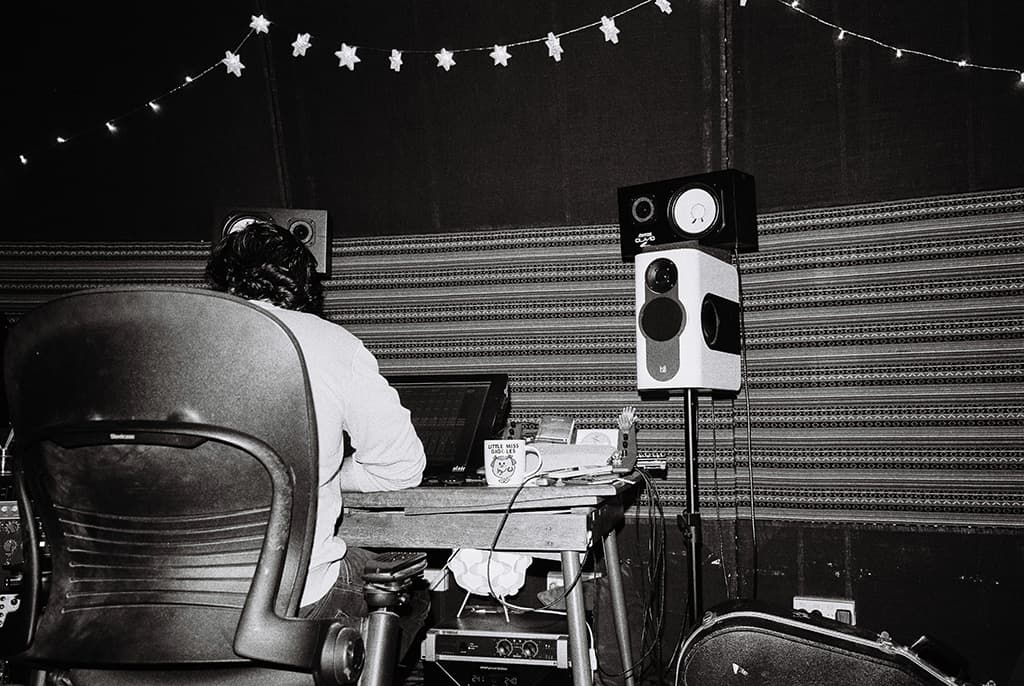

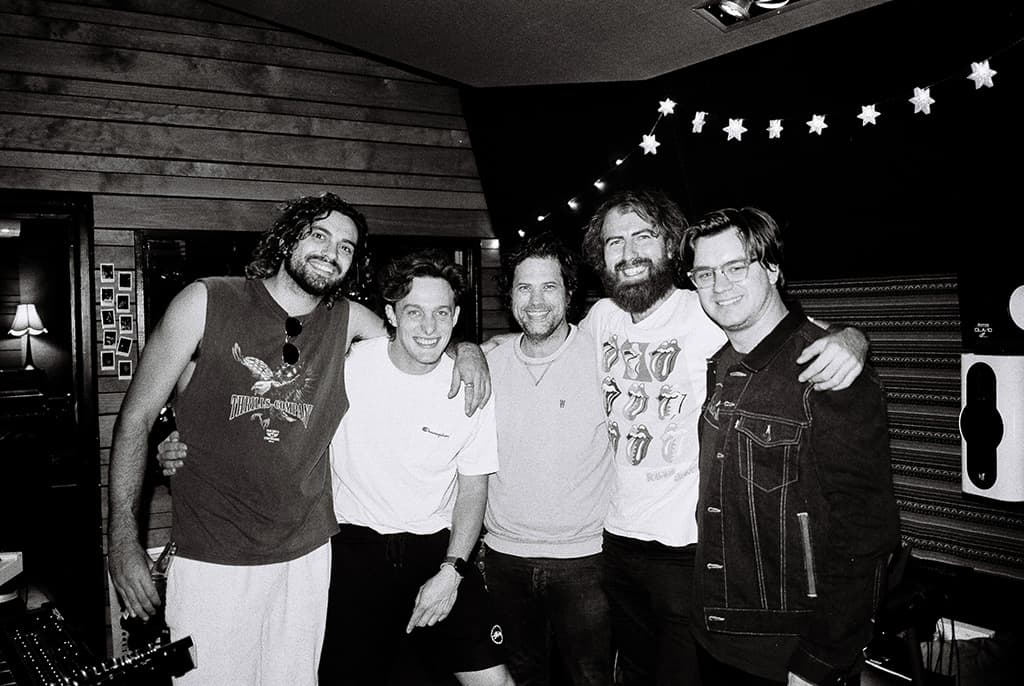

BACK TO DEBASE
Listening to Death by Denim’s brand of synthy indie-rock, aforementioned ‘shitty-ness’ is probably not what you think of. But controlled chaos, often courtesy of producer Andy, lends Death by Denim its spaced-out character.
“I’d go as far to say he’s a fifth member of the band. Being able to get the most out of us is huge. Fellow WA artist Riley Pierce has worked with him long-term, and when first working with him, sent him songs for a single recording session, just for the sake of preparation. He sent in six and got six straight back. ‘Write a better song,’ was Andy’s message. And he did. His millions of monthly streams on Spotify aren’t to be sniffed at.
“Working with us, Andy is all about chaos. If we bring out a guitar tone that’s too boring, soon enough the modulation will be ramped to 100. His approach brings brand new sounds out we wouldn’t otherwise have made. For example, his approach turned the Strymon El Capistan from a tape delay into a beautiful saturator, with the mix all the way up, feedback and time at minimum. I don’t think we would have found this without Andy, who’ll sometimes kneel down at the pedalboard and crank whatever knobs he can reach. With him, there’s no such thing as having the effect on just a little bit.’
Once tracking is over, Andy’s years of experience with WA greats like Eskimo Joe show through. “When comparing the quick bounce to the final product, I still don’t know how he does it. The amount the track changes is absolutely ridiculous. The amount of work and musicianship — filtering, effects and cuts — really does make him into our fifth band member.”




















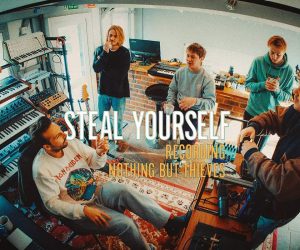



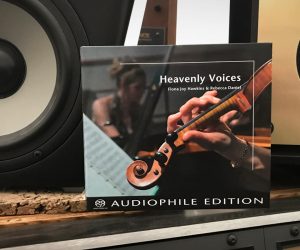
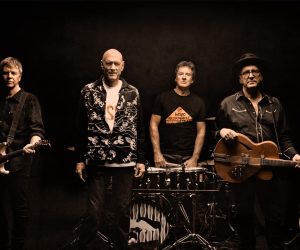


Where is this generous produced/engineer situated.